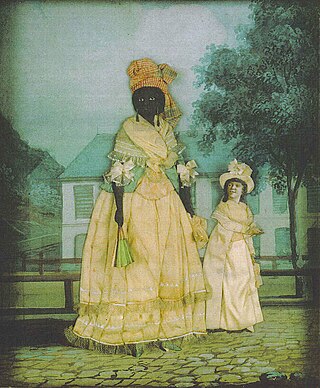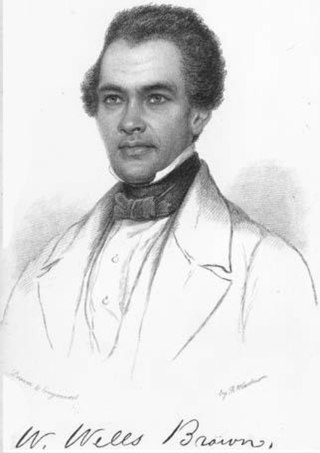
Hoodoo is a set of spiritual practices, traditions, and beliefs created and concealed from slaveholders by enslaved Africans in North America; that became the ancestral religion. Hoodoo evolved from various traditional African religions, practices, and in the American South incorporated various elements of indigenous botanical knowledge. Hoodoo is an African Diaspora tradition created during the time of slavery in the United States and is an esoteric system of African-American occultism. Many of the practices are similar to other African Diaspora traditions as the practices come from the Bakongo people in Central Africa. Over the first century of the trans-Atlantic slave trade, an estimated 52% of all kidnapped Africans came from Central African countries like Cameroon, Congo, Angola, Central African Republic and Gabon. By the end of the colonial period, enslaved Africans were taken from Angola, Senegambia, the Windward Coast, and the Gold Coast, as well as the Bight of Benin and Bight of Biafra in smaller percentages. Hoodoo is a syncretic spiritual system that combines Christianity, Islam brought over by enslaved West African Muslims, and Spiritualism. This tradition is part of the African-American cultural heritage of spirituality and religion. Following the Great Migration of African-Americans, Hoodoo spread throughout the United States. Practitioners of Hoodoo are called rootworkers, conjure doctors, conjure man or conjure woman, root doctors, Hoodoo doctors, and swampers. Regional synonyms for Hoodoo include conjure or rootwork.

The legal institution of human chattel slavery, comprising the enslavement primarily of Africans and African Americans, was prevalent in the United States of America from its founding in 1776 until 1865, predominantly in the South. Slavery was established throughout European colonization in the Americas. From 1526, during early colonial days, it was practiced in what became Britain's colonies, including the Thirteen Colonies that formed the United States. Under the law, an enslaved person was treated as property that could be bought, sold, or given away. Slavery lasted in about half of U.S. states until abolition. In the decades after the end of Reconstruction, many of slavery's economic and social functions were continued through segregation, sharecropping, and convict leasing.

Thomas Nelson Page was an American lawyer, politician, and writer. He served as the U.S. ambassador to Italy from 1913 to 1919 under the administration of President Woodrow Wilson during World War I.

Narrative of the Life of Frederick Douglass is an 1845 memoir and treatise on abolition written by African-American orator and former slave Frederick Douglass during his time in Lynn, Massachusetts. It is generally held to be the most famous of a number of narratives written by former slaves during the same period. In factual detail, the text describes the events of his life and is considered to be one of the most influential pieces of literature to fuel the abolitionist movement of the early 19th century in the United States.

In the British colonies in North America and in the United States before the abolition of slavery in 1865, free Negro or free Black described the legal status of African Americans who were not enslaved. The term was applied both to formerly enslaved people (freedmen) and to those who had been born free.
African American literature is the body of literature produced in the United States by writers of African descent. It begins with the works of such late 18th-century writers as Phillis Wheatley. Before the high point of slave narratives, African-American literature was dominated by autobiographical spiritual narratives. The genre known as slave narratives in the 19th century were accounts by people who had generally escaped from slavery, about their journeys to freedom and ways they claimed their lives. The Harlem Renaissance of the 1920s was a great period of flowering in literature and the arts, influenced both by writers who came North in the Great Migration and those who were immigrants from Jamaica and other Caribbean islands. African American writers have been recognized by the highest awards, including the Nobel Prize given to Toni Morrison in 1993. Among the themes and issues explored in this literature are the role of African Americans within the larger American society, African-American culture, racism, slavery, and social equality. African-American writing has tended to incorporate oral forms, such as spirituals, sermons, gospel music, blues, or rap.

William Wells Brown was a prominent abolitionist lecturer, novelist, playwright, and historian in the United States. Born into slavery in Montgomery County, Kentucky, near the town of Mount Sterling, Brown escaped to Ohio in 1834 at the age of 19. He settled in Boston, Massachusetts, where he worked for abolitionist causes and became a prolific writer. While working for abolition, Brown also supported causes including: temperance, women's suffrage, pacifism, prison reform, and an anti-tobacco movement. His novel Clotel (1853), considered the first novel written by an African American, was published in London, England, where he resided at the time; it was later published in the United States.

Egyptomania refers to a period of renewed interest in the culture of ancient Egypt sparked by Napoleon's Egyptian Campaign in the 19th century. Napoleon was accompanied by many scientists and scholars during this Campaign, which led to a large interest in the documentation of ancient monuments in Egypt. Thorough documentation of ancient ruins led to an increased in the interest about ancient Egypt. Jean-François Champollion deciphered the ancient hieroglyphs in 1822 by using the Rosetta Stone that was recovered by French troops in 1799 which began the study of scientific Egyptology.
David R. Roediger is the Foundation Distinguished Professor of American Studies and History at the University of Kansas, where he has been since the fall of 2014. Previously, he was an American Kendrick C. Babcock Professor of History at the University of Illinois at Urbana-Champaign (UIUC). His research interests include the construction of racial identity, class structures, labor studies, and the history of American radicalism. He writes from a Marxist theoretical framework.
African-American folktales are the storytelling and oral history of enslaved African Americans during the 1700-1900s. These stories reveal life lessons, spiritual teachings, and cultural knowledge and wisdom for the African-American community African-American cultural heritage. During slavery, African-Americans created folk stories that spoke about the hardships of slavery and created folk spirits and heroes that were able to out wit and out smart their slaveholders and defeat their enemies. These folk stories gave hope to enslaved people that folk spirits will free them from slavery. Many folktales are unique to African-American culture, while others are influenced by African, European, and Native American tales.

David Ruggles was an African-American abolitionist in New York who resisted slavery by his participation in a Committee of Vigilance and the Underground Railroad to help fugitive slaves reach free states. He was a printer in New York City during the 1830s, who also wrote numerous articles, and "was the prototype for black activist journalists of his time." He claimed to have led more than 600 fugitive slaves to freedom in the North, including Frederick Douglass, who became a friend and fellow activist. Ruggles opened the first African-American bookstore in 1834.

During the era of slavery in the United States, the education of enslaved African Americans, except for religious instruction, was discouraged, and eventually made illegal in most of the Southern states. After 1831, the prohibition was extended in some states to free blacks as well. Even if educating Blacks was legal, they still had little access to education, in the North as well as the South.

The Slave Community: Plantation Life in the Antebellum South is a book written by American historian John W. Blassingame. Published in 1972, it is one of the first historical studies of slavery in the United States to be presented from the perspective of the enslaved. The Slave Community contradicted those historians who had interpreted history to suggest that African-American slaves were docile and submissive "Sambos" who enjoyed the benefits of a paternalistic master–slave relationship on southern plantations. Using psychology, Blassingame analyzes fugitive slave narratives published in the 19th century to conclude that an independent culture developed among the enslaved and that there were a variety of personality types exhibited by slaves.
Vincent Brown is Charles Warren Professor of History, Professor of African and African-American Studies, and Director of the History Design Studio at Harvard University. His research, writing, teaching, and other creative endeavors are focused on the political dimensions of cultural practice in the African Diaspora, with a particular emphasis on the early modern Atlantic world.

Slave breeding was the practice in slave states of the United States of slave owners to systematically force the reproduction of enslaved people to increase their profits. It included coerced sexual relations between enslaved men and women or girls, forced pregnancies of enslaved women, and favoring women or young girls who could produce a relatively large number of children. The objective was to increase the number of slaves without incurring the cost of purchase, and to fill labor shortages caused by the abolition of the Atlantic slave trade.

Anti-literacy laws in many slave states before and during the American Civil War affected slaves, freedmen, and in some cases all people of color. Some laws arose from concerns that literate slaves could forge the documents required to escape to a free state. According to William M. Banks, "Many slaves who learned to write did indeed achieve freedom by this method. The wanted posters for runaways often mentioned whether the escapee could write." Anti-literacy laws also arose from fears of slave insurrection, particularly around the time of abolitionist David Walker's 1829 publication of Appeal to the Colored Citizens of the World, which openly advocated rebellion, and Nat Turner's slave rebellion of 1831.

The treatment of slaves in the United States often included sexual abuse and rape, the denial of education, and punishments like whippings. Families were often split up by the sale of one or more members, usually never to see or hear of each other again.
Hortense J. Spillers is an American literary critic, Black Feminist scholar and the Gertrude Conaway Vanderbilt Professor at Vanderbilt University. A scholar of the African diaspora, Spillers is known for her essays on African-American literature, collected in Black, White, and In Color: Essays on American Literature and Culture, published by the University of Chicago Press in 2003, and Comparative American Identities: Race, Sex, and Nationality in the Modern Text, a collection edited by Spillers published by Routledge in 1991.

Slavery in Cuba was a portion of the larger Atlantic Slave Trade that primarily supported Spanish plantation owners engaged in the sugarcane trade. It was practised on the island of Cuba from the 16th century until it was abolished by Spanish royal decree on October 7, 1886.
Dwight A. McBride an American academic administrator and scholar of race and literary studies. Since April 16, 2020, he has served as the ninth president of The New School. McBride previously served as provost, executive vice president for academic affairs, and Asa Griggs Candler Professor of African American studies at Emory University.














